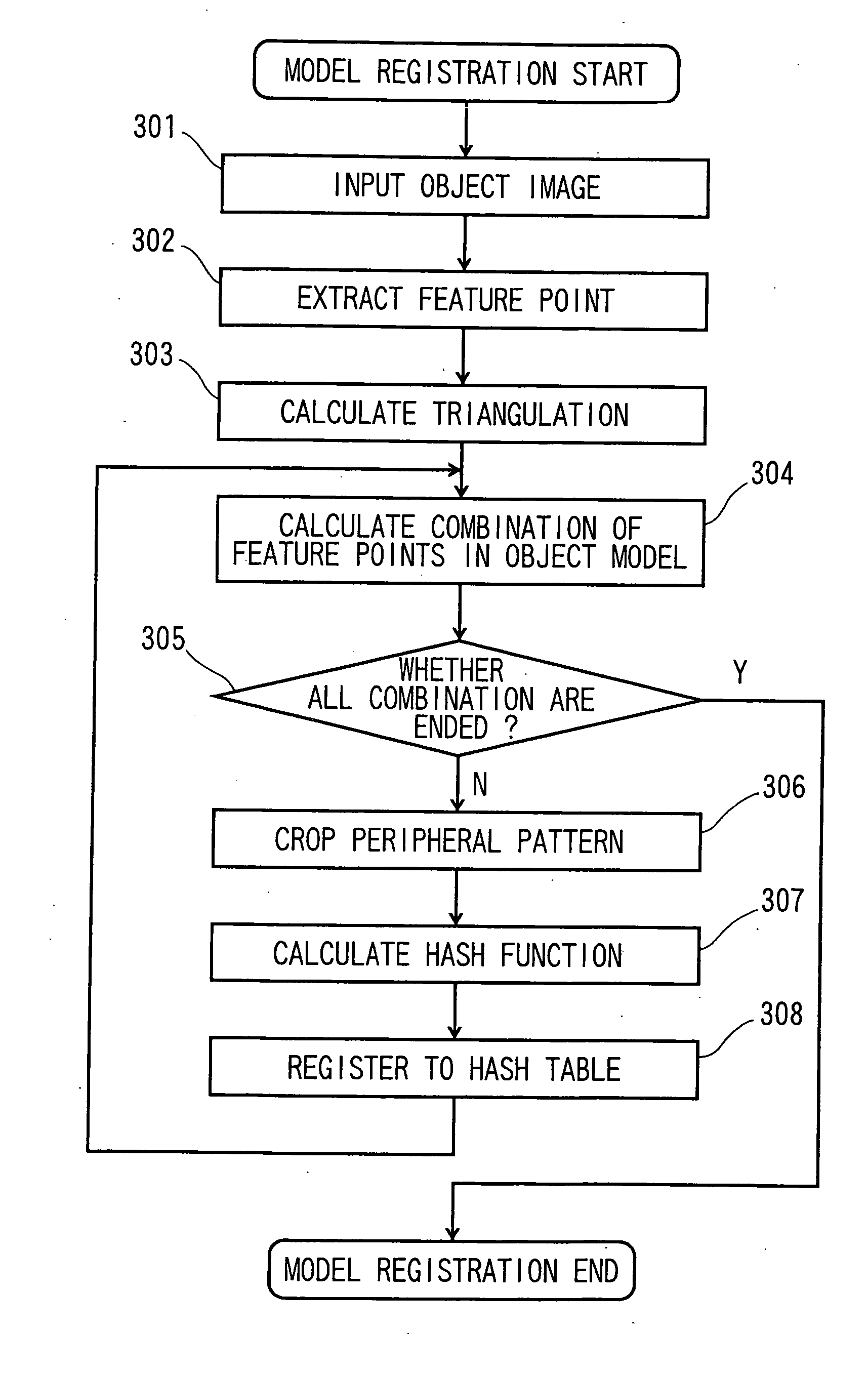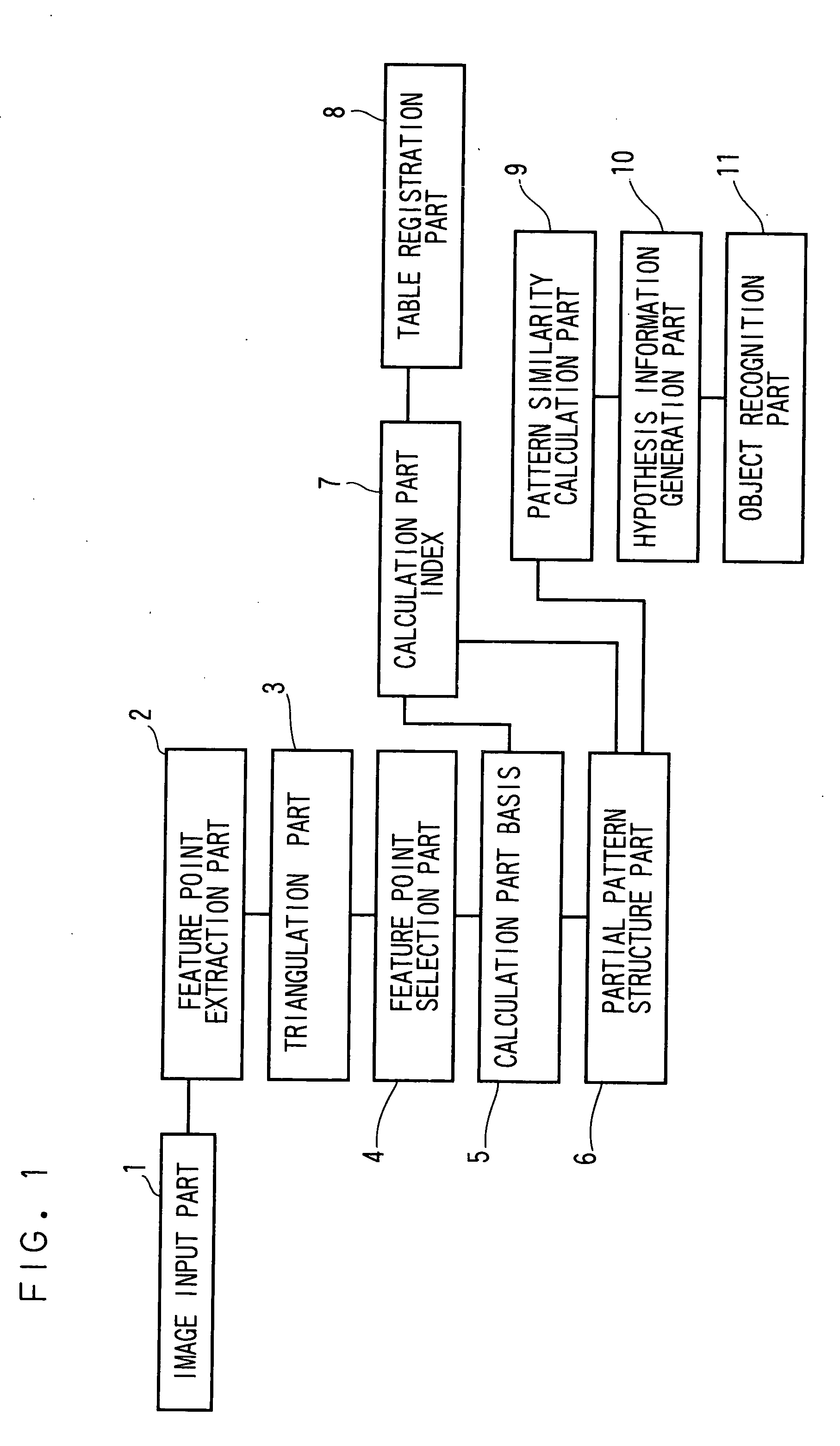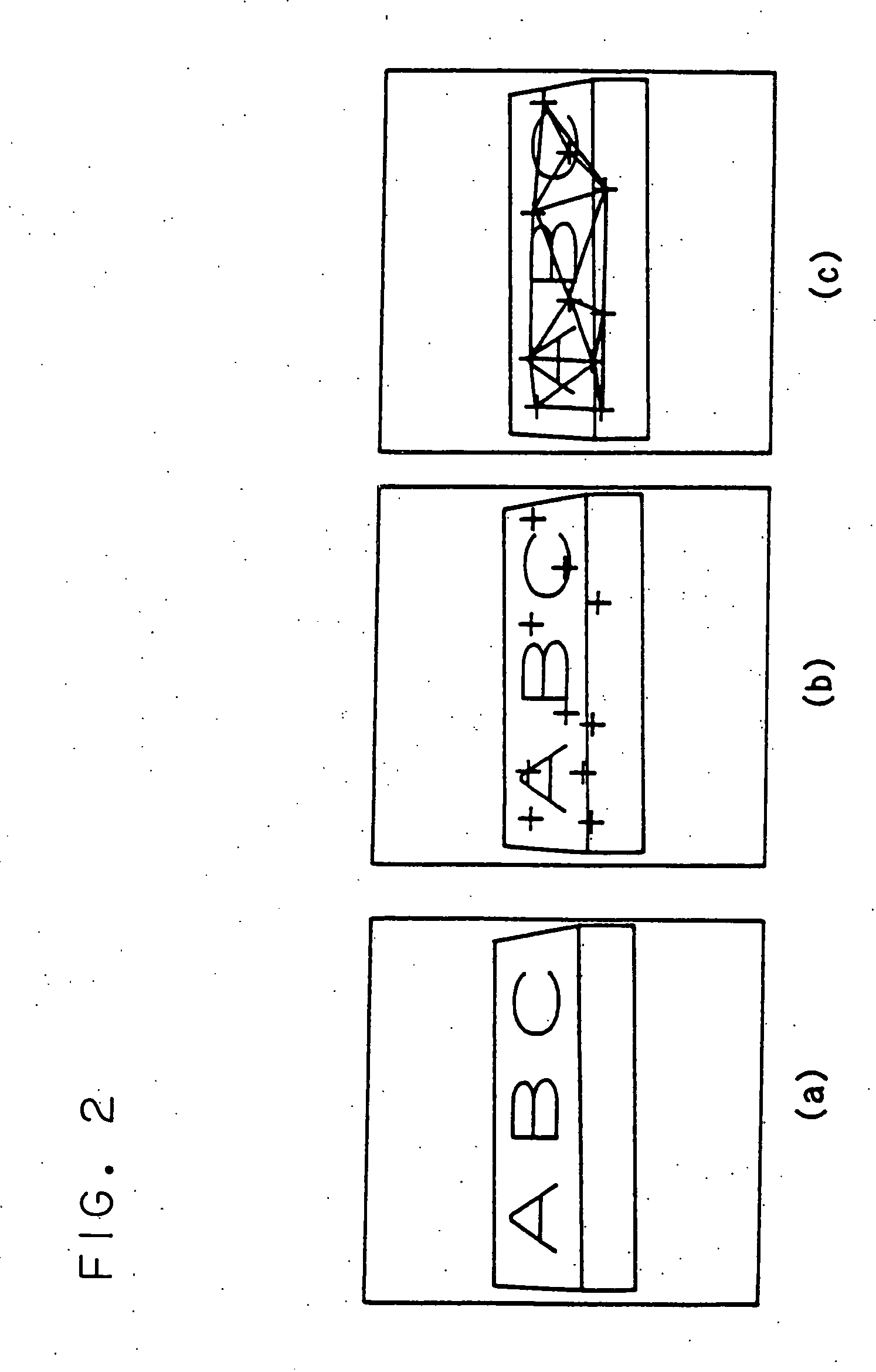Pattern recognition apparatus and method
a technology of pattern recognition and apparatus, applied in image analysis, instruments, computing, etc., can solve the problems of long time and a large amount of memory for registration, insatisfactory, and object in a specific direction cannot be detected by restrictions, so as to improve the efficiency of memory capacity, speed up the retrieval, and improve the effect of memory capacity
- Summary
- Abstract
- Description
- Claims
- Application Information
AI Technical Summary
Benefits of technology
Problems solved by technology
Method used
Image
Examples
first embodiment
[0036] Hereinafter, a pattern recognition apparatus of a first embodiment of the invention will be described with reference to the drawings.
[0037] This embodiment relates to a method of detecting the position and pose of an object from an image. Although any target object be adopted as an object to be recognized, in this embodiment, an example in which a box object as shown in FIGS. 2A to 2C is detected is used for the description.
[0038] In this embodiment, an image in which an arbitrary position and an arbitrary pose of the box are photographed is made one model, and images relating to boxes of various positions and poses are registered as plural models.
[0039] With respect to a detection object image in which the same box is photographed, it is judged that the image is similar to which model, and the position and pose of the box photographed in the detection object image are recognized.
[0040] Then, the following description is divided into two phases of; “registration of model”...
second embodiment
[0152] A second embodiment will be described.
[0153] Although the number of combinations can be reduced by using the Delaunay triangulation, it is difficult to detect plural objects that differ in size from each other, in view of the property of the Delaunay the Delaunay triangulation; only vicinity triangles are generated from the property of the Delaunay triangulation. In order to further improve the accuracy, consideration is given to a case where various scale triangles are generated. Here, plural feature point sets are formed, and by changing the way of forming them, various scale triangulations are generated.
(1) First Method
[0154] A description will be given to a first method of generating various scale triangulations.
[0155] First, the feature point detection is made by the feature point extraction part 2 to generate a feature point set. At each of the feature points, there is something like an evaluation value by the feature point extraction part 2. For example, in the ca...
third embodiment
[0164] Although the recognition results of the first and the second embodiments relate to only the position and pose of the object, a method of obtaining a place of a saliency point of a recognized object will be described. A saliency point estimation part having the following function is added to the object recognition part 11.
[0165] For example, when a description is made by use of FIG. 5-501, the saliency point is the corner part of a box and is a point indicated by a white circle mark.
(1) Operation of Saliency Point Estimation Part
[0166] The operation of the saliency point estimation part will be described.
(1-1) Registration of Saliency Point of Model
[0167] First, a saliency point of a model is registered. The saliency point of the model is registered in FeaPnt as the point different from the feature point at the time of registration of the model. For example, in the example of FIG. 5-501, in the case where the box is registered as the model, the point of the corner of th...
PUM
 Login to View More
Login to View More Abstract
Description
Claims
Application Information
 Login to View More
Login to View More - R&D
- Intellectual Property
- Life Sciences
- Materials
- Tech Scout
- Unparalleled Data Quality
- Higher Quality Content
- 60% Fewer Hallucinations
Browse by: Latest US Patents, China's latest patents, Technical Efficacy Thesaurus, Application Domain, Technology Topic, Popular Technical Reports.
© 2025 PatSnap. All rights reserved.Legal|Privacy policy|Modern Slavery Act Transparency Statement|Sitemap|About US| Contact US: help@patsnap.com



